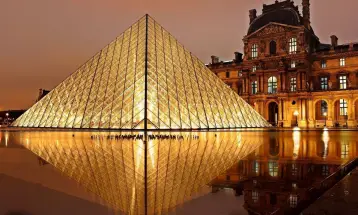Mentawai Identity Scratch

Holiday Ayo - Mentawai, an island group in the western part of the island of Sumatra, consists of the islands of Siberut, Sipora, North Pagai, and South Pagai.
Siberut Island is the largest island but has the least population. The life of the Mentawai people, whose authenticity is still maintained and has not been in much contact with civilization, is also the case with traditional Mentawai houses.
Uma is a communal house that becomes the identity of the Mentawai people.
In the front and center of the room hung various kinds of animal skulls such as monkeys, pigs, turtles, and people. Only a few torches to light up at night accompanied us to chat with Aman Lau Lau and his family.
Although it looks simple, Uma is not only a residence but also evidence of history and culture. Uma itself in the form of a house on stilts to build it must be accompanied by a special ceremony led by a traditional leader.
Uma is usually inhabited by 5 to 7 families of the same ancestry, following the paternal line. The women or wives usually came from another Uma.

As a traditional house, Uma has traditional wisdom, the construction is almost entirely made of wood and is in the form of a stage. There are logs that form the core or main support of a Uma.
While the foundation of the house uses rock which is easier to find in Mentawai than river stone. This main stake is related to the legend believed by the Mentawai tribe about the god of earthquakes called Teteu Ka Baga. This is related to the natural conditions of the Mentawai which are prone to disasters, especially earthquakes.
Uma is usually built using five types of wood, namely white meranti, rattan, bamboo, agarwood, and palm trees.
As for the roof, a thatched roof made of sago leaves is used, this roof can last for decades. The Uma building was built without using nails but using wooden pegs, using a tie, stab, and connecting techniques.
Uma has no door, the front is an open foyer which is a place for gathering, chatting, and receiving visitors during the day.
At night, this porch turns into a men's bedroom. In addition, on the front side of the house, there is a stage made of non-smooth boards.
The first inner room is a room that resembles a long ward, usually used to entertain guests, and is the place where meetings and traditional ceremonies are held.
The first inner space is then separated from the second inner space by a wooden partition. In this room, there is a fireplace as a place for cooking, vessels for ceremonial purposes asking for success in hunting. This room is usually also used as a family bed.
Between the fireplace and the back wall of the ward, there was a central aisle which was a place for dancing. The floor in the middle aisle is made of wide planks that are shaved until smooth. This smooth surface is certainly good for the dancer's feet, moreover, the wooden floor can simultaneously produce musical instruments to accompany the dance.
The verandah floor is usually made of planks, while the bedroom and kitchen floors are made of split coconut trees which are rarely installed.

The floor height is approximately 1 m from the ground. The uneven contours of the land as the base of the house are managed by adjusting the height of the supporting poles so that they can build a strong and stable house. The bottom of the house is used as a pigsty.
Another uniqueness of Uma is that there is a display of animal skulls near the roof of the entrance to the main room. The hanging skull is a pig skull that is believed to be able to invite more sustenance or prey. In addition, the number of skulls can indicate the number of parties that have been held at the Uma.
Besides Uma, there are other types of houses for the Mentawai tribe, namely Lalep and Rusuk.
Lalep is a residence for husband and wife who are married according to legal customs. While Rusuk is special buildings built for young people, widows, and those who have been evicted from the village.
With all the uniqueness, simplicity, and wisdom of a traditional house, it is very unfortunate that the existence of Uma is now increasingly threatened.
Uma has begun to be abandoned by the Mentawai tribal community who are now touched by modernity. They now tend to build houses of concrete construction.
The ritual of establishing Uma which usually must be accompanied by parties and ceremonies that are not cheap is also one of the reasons for the decreasing number of families establishing Uma.
In addition, the government's policy to relocate the Mentawai tribal people in the interior is also another cause for the reduction in the number of Uma.








Leave a comment